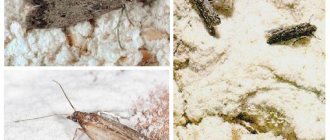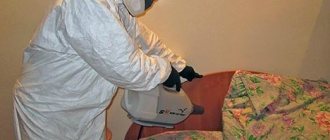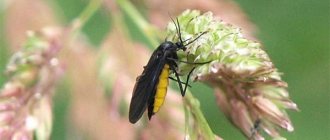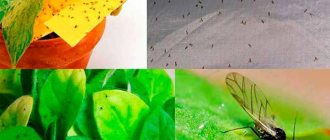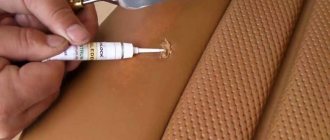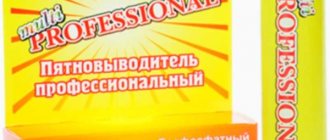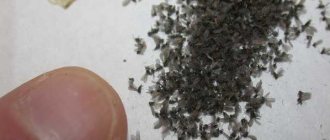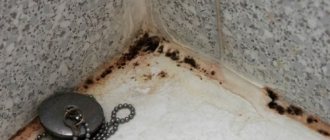It is difficult to find a person who has not encountered a moth, or rather, what remains after its vital activity. These creatures, which are not large in size, feed on keratinized components that are inherent in natural products made from fur or wool. These are various knitted woolen items, carpets, clothes, sweaters, as well as fur products, such as hats or fur coats. If there are moths in the apartment, then you cannot do without surprises. Some thing will definitely be damaged, and in such a way that hardly anyone will wear it.
When moths appear, the owners begin to panic. Therefore, you need to know how to get rid of this pest, how to deal with it and how to prevent its occurrence. For these purposes, chemistry, as well as traditional methods, are suitable. After getting rid of these voracious creatures, it is necessary to take measures to ensure that they do not appear again.
What moth larvae look like
Moth larvae are caterpillars with a white, sometimes yellowish translucent body and a black head. The parasite has powerful jaws that allow it to cut fur or chew hard foods.
The larvae have small legs with which they move. The caterpillar's body is thin and oblong. Externally, an insect at this stage of development looks like a worm. The body length of the pest is 3-7 mm.
There are 6 main types of house moths:
- grain;
- fur coat;
- kitchen;
- wardrobe;
- furniture;
- carpet
The larvae of any of the above types of pests look almost identical. But environmental conditions often determine what color a caterpillar's body will be.
Food moth
Experts know what a food moth larva looks like. The caterpillar's body is transparent beige or light brown. Body length – up to 20 mm.
The worm's head stands out. It has a dark brown color. The larva also has tenacious paws for rapid movement.
Clothes moth
Knowing what clothes moth larvae look like, it will be easy to distinguish them from another species. The caterpillar's body length is up to 1 cm. The body of the worm is translucent with a beige or yellowish tint.
The insect's head is darker.
It has 2 large mandibles with teeth, with which the parasite can cut through products made of natural wool and other fabrics.
How to get rid of moths and their larvae
There are many ways to get rid of moth larvae. If a caterpillar is discovered, you need to go through all the things and food in the closet.
Contaminated food should be thrown away or kept in the oven for 30 minutes (50 degrees). Things should be washed at a temperature of 60 degrees or aired in the sun or frost.
It is recommended to wipe kitchen cabinets with vinegar or soapy water. Carpets and furniture must be treated with insecticides and then vacuumed.
Application of chemicals
One of the most effective ways to destroy moth larvae in the house is to use chemicals. The insecticide contains substances that negatively affect the nervous and muscular systems of the parasite, which leads to its subsequent death.
If there are moths in the apartment, aerosols are most often used:
- Tornado;
- Clean house;
- Extra Meat;
- Armol;
- Difox;
- Raptor
- Argus
- Dichlorvos Neo.
It is advisable to carry out the treatment in a protective suit, goggles, mask, and gloves. The disadvantage of aerosols is that after spraying them, sometimes an unpleasant odor remains.
To destroy caterpillars, it is enough to treat infected things and surfaces with an aerosol 1-2 times. The insecticidal effect of the drug lasts about 6 months.
Folk methods of struggle
To get rid of larvae, folk remedies are often used.
So that pests do not appear on clothes or food, it is worth trying to eliminate them with essential oils.
What parasites dislike the most is the smell of the following oils:
- geranium,
- lavender,
- grapefruit,
- mint,
- lemon,
- eucalyptus,
- orange.
Add 5 drops of extract to 1 liter of water. The resulting solution is used to treat hard-to-reach places in the sofa, other upholstered furniture, cabinets, carpets, clothes, and baseboards.
Lepidoptera caterpillars die in the open sun. Therefore, if possible, clothes, carpets and other contaminated items should be taken outside or onto the balcony for 1-4 hours. Afterwards everything needs to be washed, washed and dried.
Frost also helps remove pests. To destroy the caterpillars, things are taken out into the cold for several hours.
People who have successfully gotten rid of pests using folk remedies know how else to remove moth larvae.
Popular methods of removing parasites:
- sagebrush. A decoction is prepared based on the leaves and seeds of the herb. The resulting solution is used to treat contaminated products.
- Soap and pine needles. Domestic butterflies are destroyed by alkali and repelled by the smell of pine needles. Soap is dissolved in boiling water and pine needles are placed there. After 20 minutes, the items are soaked in the solution for 10 minutes.
- Boiling water. Contaminated clothing should be immersed in boiling water for 10-20 minutes.
- Tobacco. The acids contained in the plant have a detrimental effect on the larvae. Tobacco leaves are infused in hot water. A spray bottle is filled with liquid, and then sprayed over all places where parasites live.
At what temperature do moths and their larvae die?
Many housewives who have lepidopteran insects want to know at what temperature the moth larvae die. Experts say that for reproduction and normal existence, parasites need a temperature of 20-30 degrees.
If the indicator is less than 15°C, the pests’ metabolism will slow down significantly and they will become inactive. If the temperature returns to normal, the pests will continue their activity.
Insects are killed by temperatures less than 10 °C and more than 30 °C.
Video
How to get rid of moths?
Insect species
Several varieties of parasitic insects inhabit the home. Each type causes considerable damage to the home. The fur and clothing varieties most often appear in apartments.
Another pest that annoys owners is food moths in the apartment. Larvae and adults feed on flour, pasta, cereals, grains, and dried fruits.
Upholstered furniture harbors a pest that feeds on the fibers of the fabrics that are upholstered on the sofa, armchairs, and chairs. Tiny dots appear in the affected area, lint falls out, and if you run your fingers over the corroded area, a hole will appear or the upper part will have “bald patches.” The less often the housewife cleans the products, the more damage the parasite larvae can cause. With high air humidity in the home, temperatures from +22 degrees or more, lepidopteran butterflies reproduce well.
Other types of moths are less common in the apartment:
cabbage; grain; rye; wax moth.
Nutrition of larvae
The caterpillar feeds on a variety of foods or things. In nature, pests eat fruits, feathers, berries, wool, grains, vegetables or nuts.
Housewives in whose homes these parasites lived know what house moth larvae eat. Once in the house, insects begin to actively feed on hair, fur, and fabrics (linen, silk, cotton, wool).
Parasites also love to eat products made from natural fur. Moreover, insects choose old materials, which are better to chew and digest.
Clothes moth larvae are quite fastidious in their diet. They love to eat sweaty clothes or stained carpets.
Kitchen moth larvae consume bran, sweets, flour, cereals and nuts. Insects also eat cookies, pasta, tea, and dried fruits.
The larva's stomach is very small, so the parasite leaves behind an insignificant trace. Because of this, the presence of moths for a long time is often unnoticed. Parasites are discovered after their active reproduction, when the number of caterpillars becomes enormous.
So, moth larvae feed differently.
And the type of food determines the name of the insect:
| Type of insect | What does it eat? |
| Carpet | Paths, rugs, carpets |
| Fur coat | Fur coats, animal hair or products made from it |
| Cereal | Corn |
| Clothes | Felt products, fruits |
| Furniture | Furniture upholstery |
| Kitchen | Nuts, grains, seeds, dry fruits, legumes |
Source of pests
The signal to start the fight is the eggs, larvae or corpses of moths found in bulk products (cereals, flour, spices). Another sign of food contamination with this parasite is a thin cobweb.
Before deciding how to get rid of kitchen moths, it is important to understand where they got into your kitchen. An insect can enter an apartment in different ways:
An insect can enter an apartment in different ways:
- fly through a window that does not have a mosquito net (usually this happens in the evening);
- penetrate through the ventilation shaft;
- sneak into the kitchen on food packages - cereals and cereals, dried fruits, spices, flour, biscuits and other groceries (which were stored in a warehouse without observing sanitary standards);
- come from the garden (tomato, potato moth).
This pest has many ways of entry, and it can hide anywhere
Therefore, it is important to carefully inspect the entire room and find not only the source of the moth, but also products already infected with it
You should check:
- the tops of kitchen cabinets - insect cocoons can hide here;
- ceiling, chandelier, wallpaper joints - moths can be in cracks, dark corners;
- the contents of all cabinets and drawers, including unpacked cereals (cardboard, foil, polyethylene are not an obstacle for this parasite), jar lids, seeds, animal feed.
After a thorough inspection of the entire room, you can begin to completely destroy the enemy.
Peculiarities of moth reproduction
Moths have 4 stages of development. The timing of the stages varies and depends on the type of insect and its living conditions.
The development cycle of the lepidopteran parasite consists of a number of stages:
- egg laying;
- hatching of larvae;
- transformation of a caterpillar into a pupa;
- adult.
At a time, the female lays 40-200 eggs, up to 1 mm in size. Further development of eggs is regulated by temperature. On average, the process lasts up to 3 weeks.
Experts know how moth larvae appear. The caterpillar hatches from the egg. The worm has a transparent skin, and its body length reaches 1 mm.
The caterpillar goes through several stages of molting and then becomes a pupa.
It is noteworthy that food species develop in 4-5 months, and clothing species - up to 90 days.
For pupation, insects choose hard-to-reach, dark places. But some types of lepidoptera prefer bright places.
Many species of house moths make a cocoon for themselves. This is a cover woven from a substance resembling silk. In a protective cocoon, the larva is in the pronymph state, and then it molts.
The integument of the pupa hardens over time. The shell protects the insect until it transforms into a butterfly (up to 14 days).
The lifespan of an adult is up to 3 weeks. During this time, she mates, looks for food for the larvae, and leaves offspring.
Prevention
To prevent the moth larva from actively destroying valuables or food, it is important to know how to prevent the pest from appearing in the house. To protect your home, it is important to follow a number of rules.
So, only washed items should be stored in closets. From time to time, all woolen or fur products and natural fabrics must be ventilated in frost or sun.
Other rules of prevention:
- Fur and wool must be periodically treated with insecticides.
- Items cannot be placed in plastic bags.
- Herbs that repel parasites (tansy, wormwood, lavender) should be placed in the wardrobe and chest of drawers.
- You can place citrus peels in the kitchen.
- On shelves with clothes you need to place pieces of foam rubber soaked in essential extracts.
- All food products that can be damaged by larvae must be periodically sorted and stored in closed containers.
- Regularly you need to carefully inspect all seams and folds on things for the presence of parasites.
Microscopic larvae can ruin expensive and valuable things. Therefore, it is easier to prevent their occurrence than to purchase a new fur coat, furniture or carpet.
To do this, it is important to follow the prevention rules described above. And at the first sign of moths appearing in the house, carry out a thorough disinfection.
Reasons for appearance
To effectively combat moths, you need to find the source and reasons for its entry into the apartment.
The main reasons for the appearance of moths:
- Flew in through an open window on its own. If there is no protective net on it, then this insect can fly into the house and take root in it. Using a mosquito net will eliminate such troubles.
- Brought into the house along with things. These could be woolen or knitted clothes that you took from your grandmother. It is not necessary that these are adult pests: their larvae, which are difficult to notice, are sufficient. To prevent this from happening, things should be well ventilated and left in the sun for several hours before bringing them into the house.
- Came with old furniture. The larvae can be found in the upholstery of old sofas. They look like small white cocoons. Almost all old furniture is contaminated, so if there is a need to bring it into the house, you must first treat the fabric with special means.
- Introduced by domestic animals. Larvae may be on their fur, so you should periodically wash the animals with special shampoos that help get rid of any parasites.
- It came with cereals that were improperly stored in a warehouse, or with dried fruits and mushrooms purchased at the market.
Most often, moths enter an apartment along with new things that contain fur and wool.
